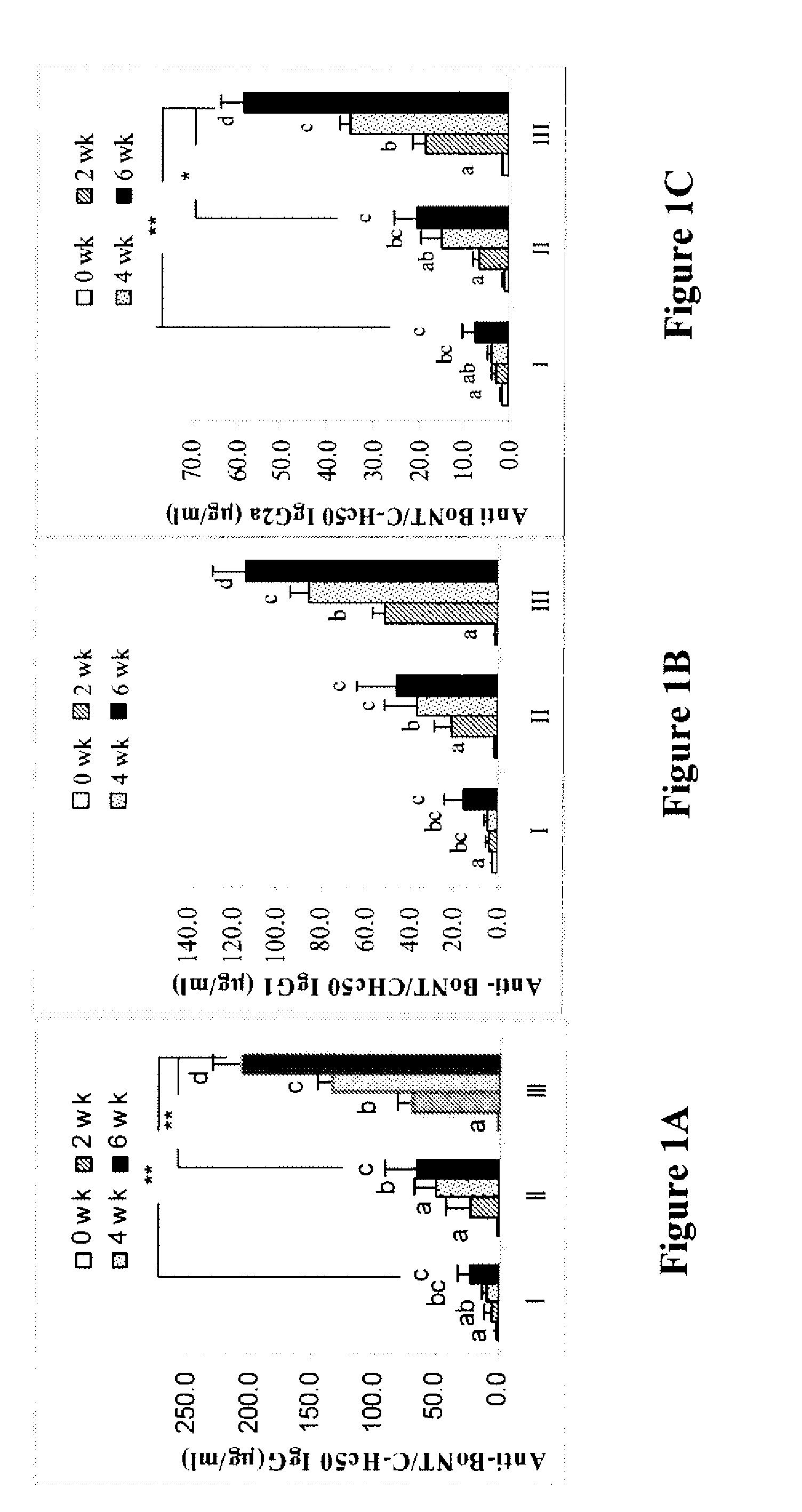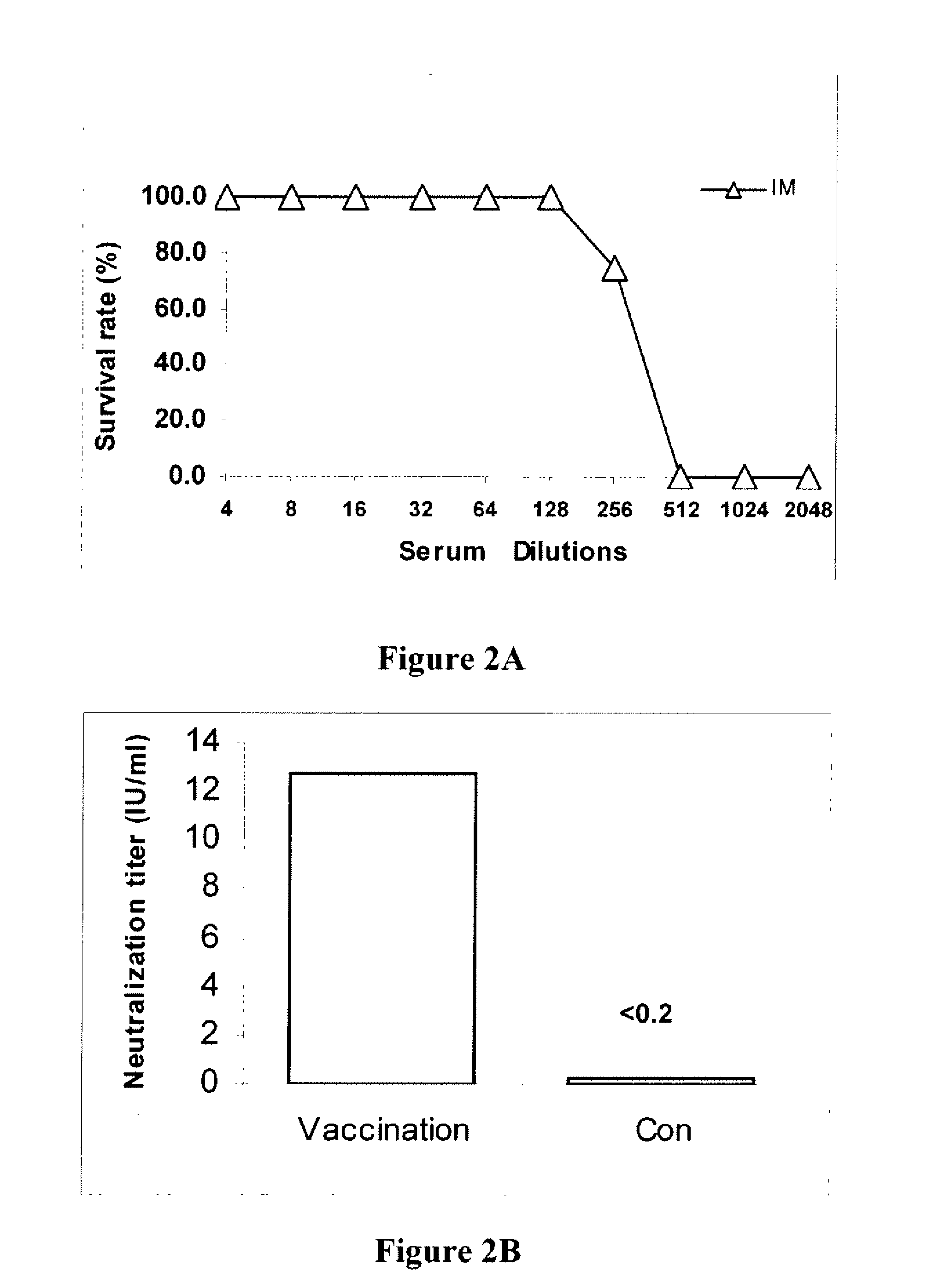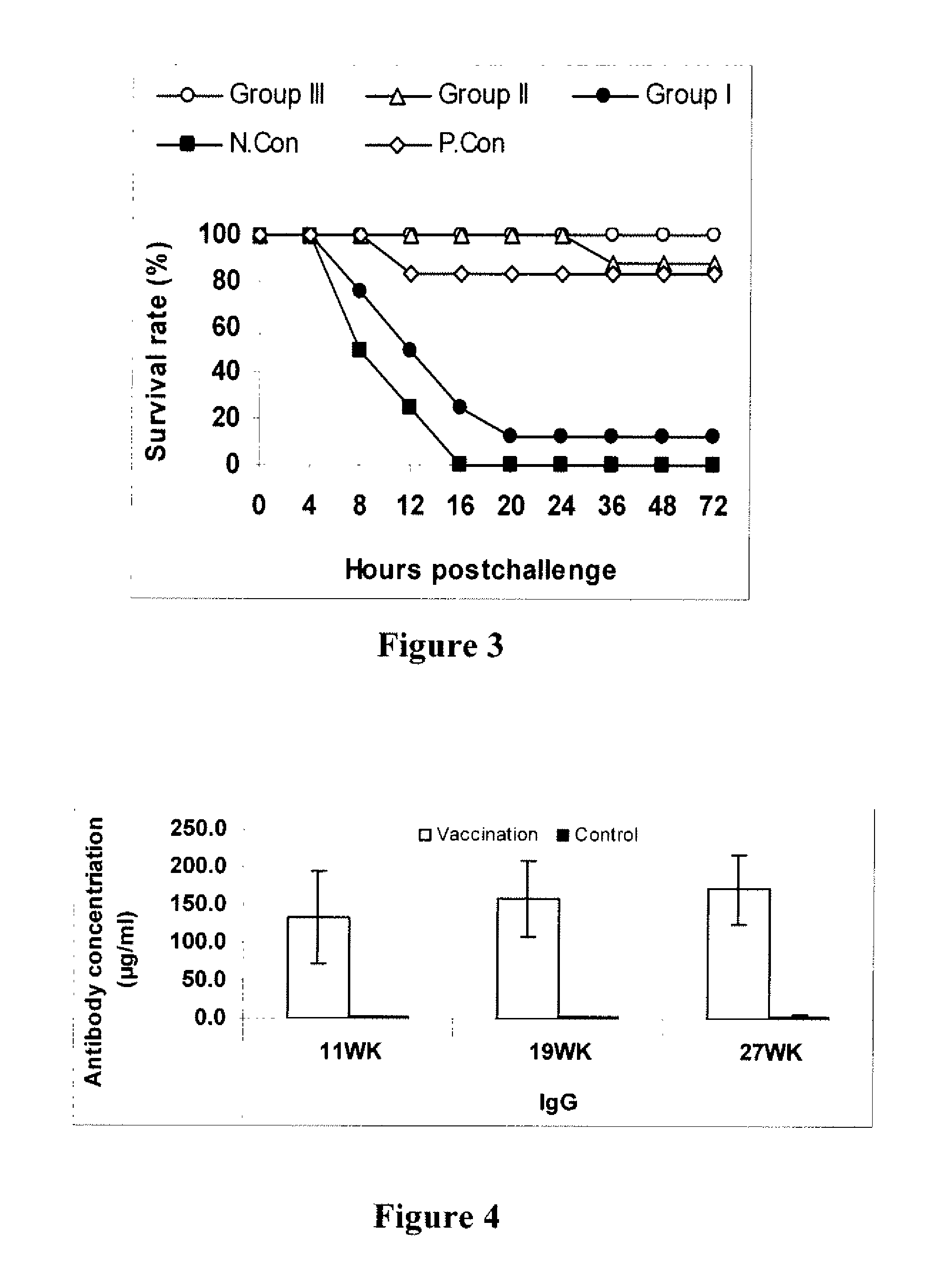Vaccine against botulism
a technology of botulism and vaccines, applied in the field of new dna and protein vaccines, can solve the problems of high manufacturing cost, low yield of botulinum toxin production, and high risk of production, and achieve the effect of long-lasting protection against botulism
- Summary
- Abstract
- Description
- Claims
- Application Information
AI Technical Summary
Benefits of technology
Problems solved by technology
Method used
Image
Examples
example 1
Construction of Nucleic Acid Molecule Encoding Codon-Optimized HC50 of BoNT / C Chimeric Protein, and Insertion in Adeno-viral Vector
[0099]Replication-incompetent recombinant adenoviral vectors were constructed using the AdEasy™ System (Stratagene, La Jolla, Calif.) (He et al., “A Simplified System for Generating Recombinant Adenoviruses,”Proc Natl Acad Sci USA 95(5):2509-14 (1998); Zeng et al., “AdEasy System Made Easier by Selecting the Viral Backbone Plasmid Preceding Homologous Recombination,”Biotechniques 31(2):260-2 (2001); which are hereby incorporated by reference in their entirety). The adenoviral vector is derived from human adenovirus serotype 5 rendered replication-incompetent by the deletion of the E1 and E3 regions.
[0100]To construct the Ad / opt-BoNT / C—HC50, the nucleotides encoding the 50-kDa C-terminal fragment of heavy chain of botulinum neurotoxin type C1 (Kimura et al., “The Complete Nucleotide Sequence of the Gene Coding for Botulinum Type C1 Toxin in the C-ST Phage...
example 2
Antibody Response to HC50 of BoNT / C after Intramuscular Vaccination
[0103]Mice were allotted into five groups (8 mice / group). They were injected i.m. into the hind-leg quadriceps with different doses of Ad / opt-BoNT / C—HC50 vector prepared in Example 1 (105, 106, or 2×107 pfu / mouse), Ad / Null (2×107 pfu / mouse), and the Botulinum Toxoid Adsorbed Pentavalent (ABCDE) (0.05 ml / mouse), an IND vaccine which was produced by the Michigan Department of Public Health. Animals were inoculated once in week 0. Animal sera were obtained by retro-orbital bleeding every 2 weeks (in week 0, 2, 4, and 6) and stored at −20° C. until further assays.
[0104]Antibody responses in animal sera were measured by quantitative ELISA. FIGS. 1A-C show BoNT / C—HC50-specific antibody responses in sera 2, 4, and 6 weeks after vaccination. The data indicate that the lowest vaccine dosage 105 pfu tested was sufficient to elicit significant IgG1 and IgG2a antibody responses in Week 6 compared with the control group injected ...
example 3
In vitro Neutralization of Botulinum Neurotoxin
[0105]Neutralizing antibody titers to BoNT / C were measured by the ability of sera to neutralize the neurotoxin in vitro in combination with the mouse lethality assay. 200 μl of pooled sera from 8 mice 6 weeks after vaccination with 2×107 pfu of Ad / opt-BoNT / C—HC50 vector or with Ad / Null (both obtained from inoculated mice of Example 2). The sera were initially diluted 1:4, and then diluted in twofold series (1:4 to 1:1052) in DPBS (Dulbecco's PBS). 400×MLD50 BoNT / C in 200 μl of DPBS was added into each dilution. After incubation at room temperature for 1 h, the anti-serum and the BoNT / C mixture was injected i.p. into mice, 100 μl (corresponding to 100×MLD50 of BoNT / C before neutralization) per mouse, 4 mice were tested for each dilution.
[0106]The mice were monitored for 4 days, and the number of deaths at each sample dilution was recorded. If the toxin was neutralized, the mice were protected from the challenge with neutralized toxin. Th...
PUM
| Property | Measurement | Unit |
|---|---|---|
| pH | aaaaa | aaaaa |
| pH | aaaaa | aaaaa |
| pH | aaaaa | aaaaa |
Abstract
Description
Claims
Application Information
 Login to view more
Login to view more - R&D Engineer
- R&D Manager
- IP Professional
- Industry Leading Data Capabilities
- Powerful AI technology
- Patent DNA Extraction
Browse by: Latest US Patents, China's latest patents, Technical Efficacy Thesaurus, Application Domain, Technology Topic.
© 2024 PatSnap. All rights reserved.Legal|Privacy policy|Modern Slavery Act Transparency Statement|Sitemap



